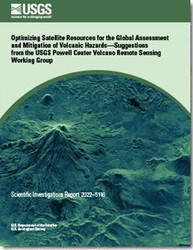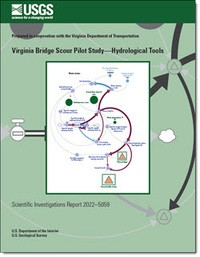
Product Details
- Product Number
- 534261
- Series
- SIR-2022-5116
- Scale
- NO SCALE
- Alternate ID
- SIR2022-5116
- ISBN
- 978-1-4113-4507-2
- Authors
- A ROMAN
- Version Date
- 01/01/2022
- Countries
- USA
- Media
- Paper
- Format
- Bound
Additional Details
- Description
-
Optimizing Satellite Resources for the Global Assessment and Mitigation of Volcanic Hazards—Suggestions from the USGS Powell Center Volcano Remote Sensing Working Group
Scientific Investigations Report 2022-5116
By: M. E. Pritchard, M. Poland, K. Reath, B. Andrews, M. Bagnardi, J. Biggs, S. Carn, D. Coppola, S.K. Ebmeier, M.A. Furtney, T. Girona, J. Griswold, T. Lopez, P. Lundgren, S. Ogburn, M. Pavolonis, E. Rumpf, G. Vaughan, C. Wauthier, R. Wessels, R. Wright, K.R. Anderson, M.G. Bato, and A. Roman
For additional information, contact:
Director, Volcano Science Center
https://www.usgs.gov/centers/volcano-science-center
U.S. Geological Survey
1300 SE Cardinal Court
Vancouver, WA 38683
Abstract
A significant number of the world’s approximately 1,400 subaerial volcanoes with Holocene eruptions are unmonitored by ground-based sensors yet constitute a potential hazard to nearby residents and infrastructure, as well as air travel and global commerce. Data from an international constellation of more than 60 current satellite instruments provide a cost-effective means of tracking activity and potentially forecasting hazards at volcanoes around the world. These data span the electromagnetic spectrum: ultraviolet, optical, infrared, and microwave (synthetic aperture radar). They can measure volcanic thermal and gas emissions, ground displacement, and surface and topographic change, providing information that addresses one of the grand challenges in volcanology—to overcome our incomplete understanding of the relation between volcanic unrest and eruption, which is currently based on only a few well-studied volcanoes.
Although the potential of volcano remote sensing has been recognized for decades, there are many hurdles to clear before remote sensing data can be used fully by all volcano observatories. These include: (1) the limited temporal and spatial coverage of active volcanoes by satellites and the delayed distribution of those data; (2) the lack of background d ata acquired at all volcanoes; and (3) limited access to, and utilization of, remote sensing data in some areas owing to a lack of expertise, licensing, user-friendly formats, data access portals, or computational infrastructure.
While remote sensing data will never replace ground-based monitoring, a joint observation strategy provides a powerful means of assessing volcanic activity before, during, and after hazardous eruptions, especially given the unique spatial, temporal, and spectral perspective provided by remote measurements. A coordinated international remote sensing observation strategy for volcanoes—similar to one used by the cryosphere community—along with a volcano space task group to maximize the utility of satellite data for volcano monitoring would be highly beneficial. Such a vision could facilitate (1) global coordination of satellite observations (as done for polar regions) for background monitoring and eruption response, (2) open data that can be rapidly distributed during crises, (3) communication tools and forums for discussion of satellite data, (4) integrated ground and satellite databases of unrest, and (5) global capacity building.
- Survey Date
- 2022
- Print Date
- 2022
- Height In Inches
- 11.000
- Width In Inches
- 0.250
- Length In Inches
- 8.500
- Two Sided
- Yes
- Pieces
- 1
- Languages
- English





